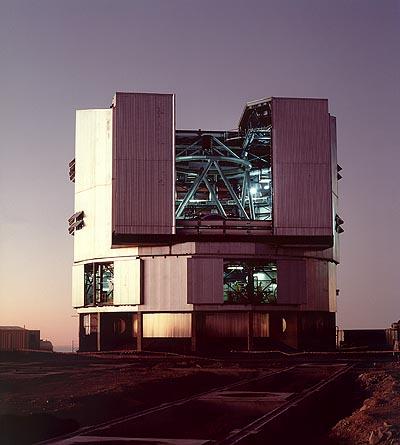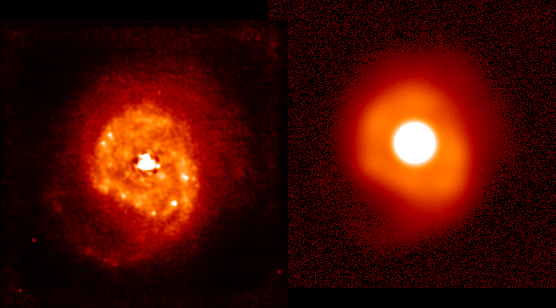Control for adaptive optics
Adaptive optics (AO) is a technique to actively sense, estimate and correct the wavefront distortions that are introduced in a light beam as it propagates through a turbulent medium. One important application is to counteract the effects of atmospheric turbulence in ground-based astronomical imaging, which results in a considerable improvement of the image resolution (Figure 1). Nowadays, most of the leading ground-based telescopes are equipped or being retrofitted with some kind of AO system. In this project we focus on the control aspects of adaptive optics. The goal is to develop innovative control strategies for AO in general, with a main emphasis on systems dedicated to ground-based imaging.


Figure 1: (left) Paranal Observatory, "Credit European Southern Observatory (ESO)'' (right) Image of a galaxy with and without AO compensation "Credit Canada, France, Hawaii Telescope (CFHT)''
The control strategy used in the current generation of AO systems is usually not able to take full advantage of the spatio-temporal correlation in the wavefront. In standard AO control design, the temporal evolution of the wavefront is often entirely neglected. Based on physical insights, the standard control law consists of a cascade of a static matrix multiplication and a series of parallel SISO feedback loops. Since atmospheric turbulence is clearly a dynamic process, it is
to be expected that the performance of current AO systems may benefit from a more rigorous control approach. By exploiting the spatio-temporal correlation it is possible to anticipate future wavefront distortions and reduce the temporal error caused by the unavoidable delay between measurement and correction. Furthermore it should be possible to reduce the sensitivity to measurement noise as photons collected at different time instants and neighboring wavefront sensor channels may all contribute to improve the wavefront estimate. This might relax the requirements on the magnitude of the guide star.
The goal of this project is to develop advanced control strategies that are able exploit the spatio-temporal correlation in the wavefront. Incorporating the spatio-temporal dynamics in the control design requires an accurate model of the wavefront distortion. For this reason, a significant part of this project will be devoted to the modeling the wavefront distortions introduced by the turbulence atmosphere. In particular, we will focus on the development of techniques to identify an atmospheric disturbance model from open-loop wavefront slope measurements from a Shack-Hartmann sensor. Data-driven modeling has the advantage that it yields a good match with the prevalent turbulence conditions and it results in a disturbance model independent from restricting assumptions like the assumption that turbulence has a Kolmogorov power spectrum or that its temporal evolution can be described by the frozen flow hypothesis. The main challenge, both in identifying an atmospheric disturbance model and in the controller design, is dimension of an AO system. Current AO systems typically incorporate a few hundred sensors and actuators, which calls for efficient algorithms. This issue will become increasingly important since the number of sensors and actuators of future AO systems is only expected to grow.
Project members:
- prof.dr.ir. M. Verhaegen (Michel)
- K.J.G. Hinnen
- N. Doelman
Keywords
Optics and imaging, Identification and estimation, Model predictive control, Distributed and large-scale systems, Optimization-based control